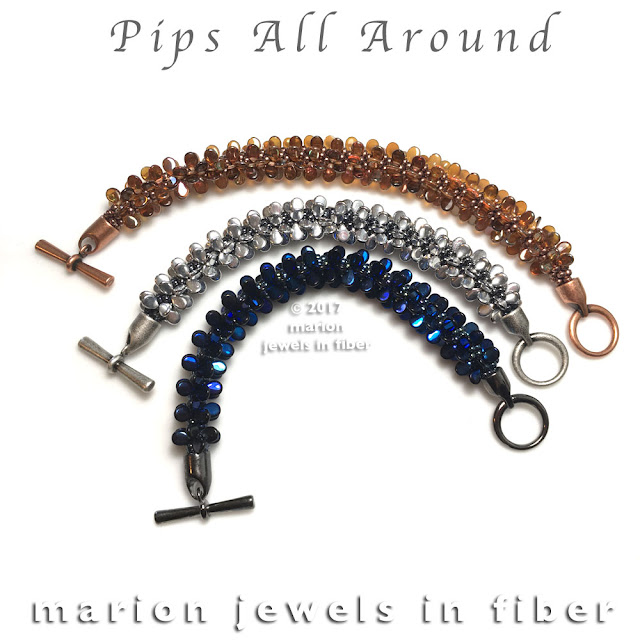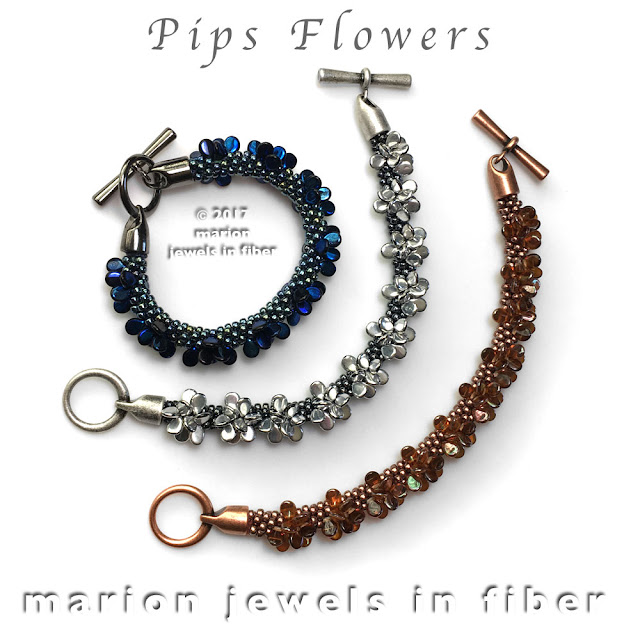When you look at these pieces, they simply look like beaded bracelets. Which actual technique was used to make them is not so obvious nor important when you wear them. They could have been made using a bead weaving technique, tubular bead crochet, or a fiber technique known as kumihimo taken over by beaders and fiber artist who like beads. Kumi means braided, Himo, cord in Japanese. The braiding technique using tools such as wood stand (Maru Dai) or a disk or board was developed tin Japan. With beads, kumihimo is now known as Bead Kumihimo or Beaded Kumihimo.
What's the difference between these techniques? The process.
Bead Weaving requires multiple passes through the beads and working with a needle. Each bead is stitching one at a time to the finished piece. The thread takes multiple pass through the bead, plus it has to fit into a needle, so it needs to be thin. Thin also means not as strong... but, hey, this technique has many fans.
Interested in bead weaving techniques and thread? If so start HERE. The links takes you to a series of posts on Peyote Stitch, one of the most popular beading technique and a good place to start.
Tubular Bead Crochet requires a crochet hook and good eyes. Catching the thread in the middle of the beads can be annoying after a while, but the work is highly portable, once the beads are loaded onto ONE cord, the crochet process begins.
Interested in Tubular Bead Crochet? If so, get this tool and tutorial. I would never have been able to get over the start of the crochet tube without them.
Bead Kumihimo requires a few tools, but $12 will get you everything you need in a nice bag so you can take your project around. The beads get loaded up to 8 cords. Self needles or needles can be used to this process. The braiding process is easy to learn, it requires moving the cord from one place to another. And if you doing bead kumihimo dropping a bead at the same time. Period.
Basic 8 Stand Round Braid Kumihimo with or without beads does not require amazing skills. Anybody can learn. I do it watching TV, listening to conversations, and while doing demos and explaining the process.
Oh, one more comparison, the cord size for Tubular Bead Crochet and Kumihimo is usually the same, thick enough to hold well, and thin enough for the beads to slide down easily.
Leave comments if you have any questions! - Marion



















































































